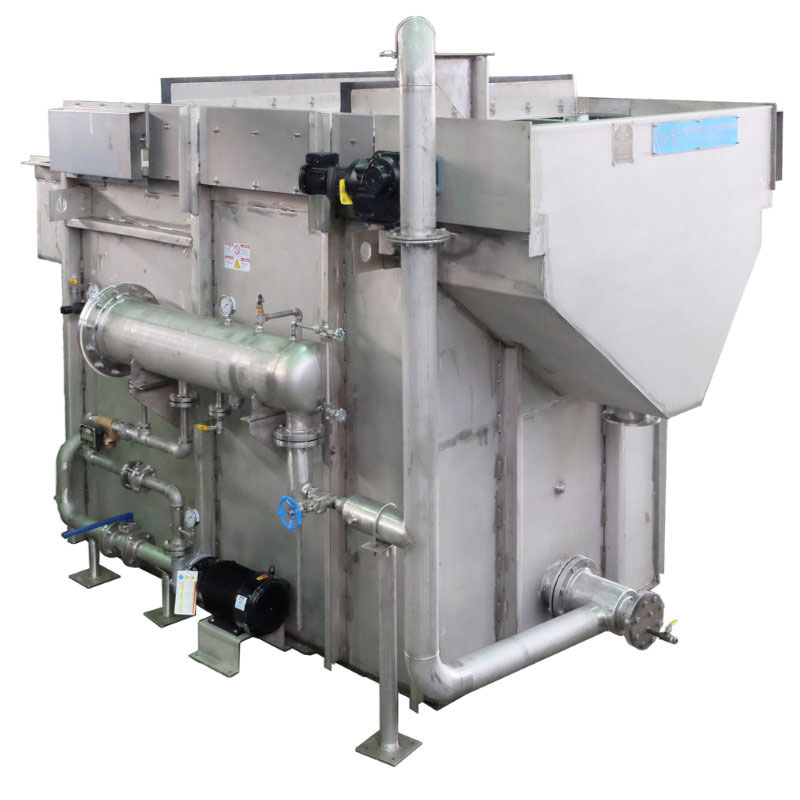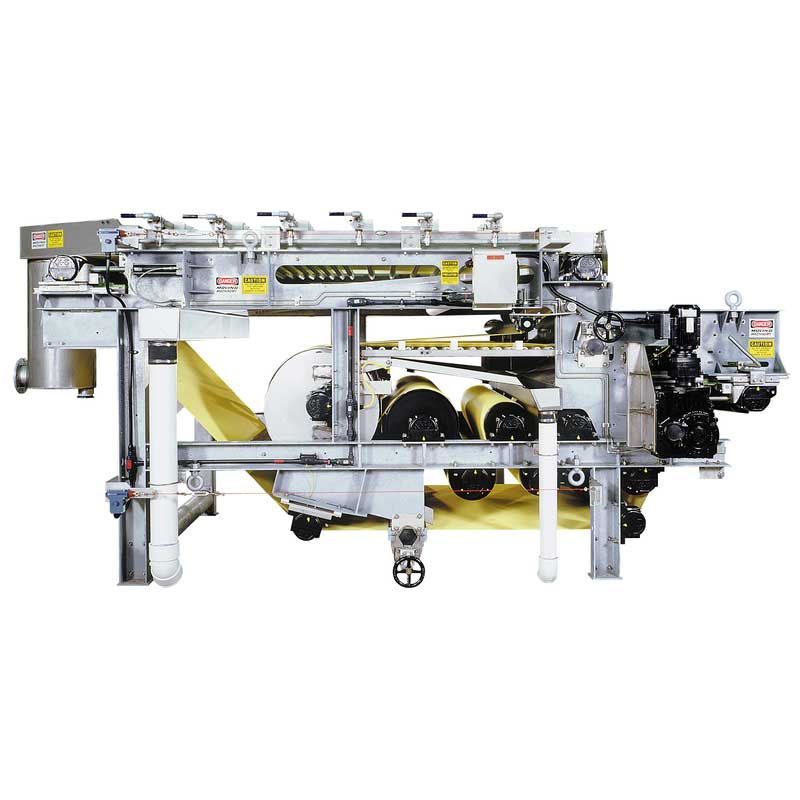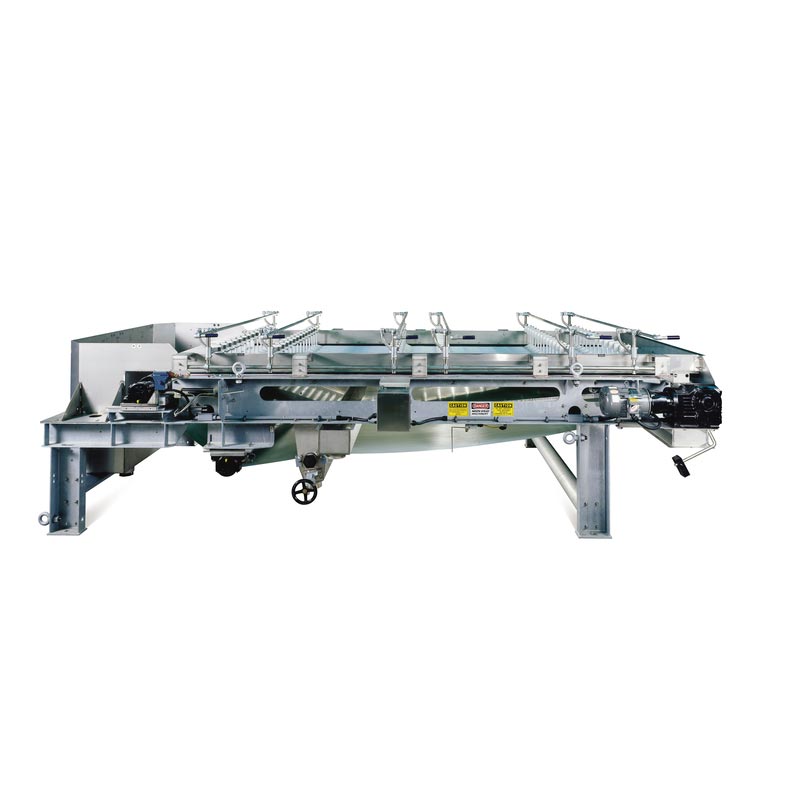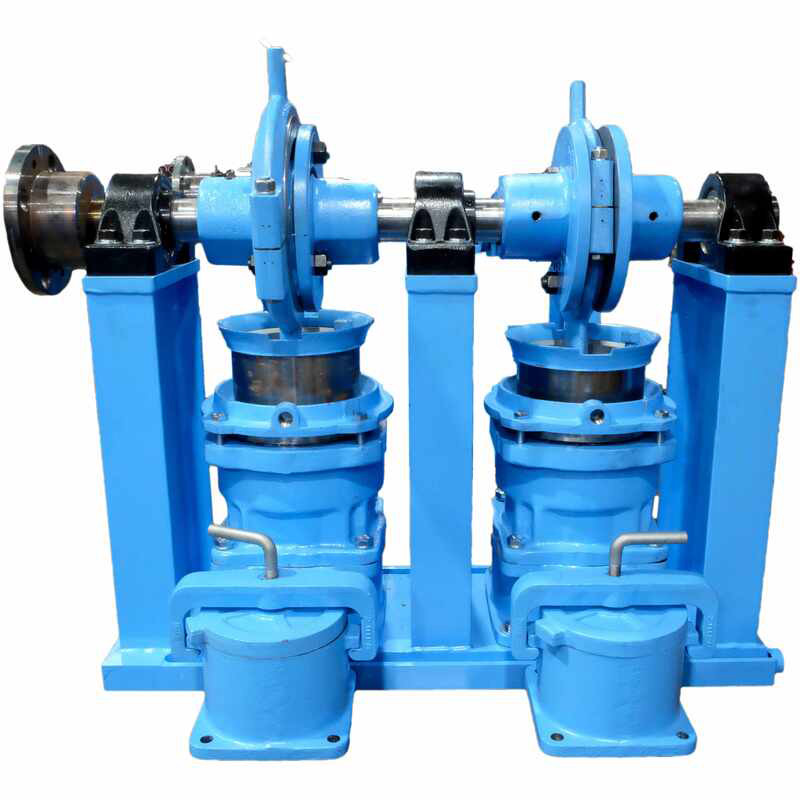Applications
Related Products
Benefits

Remove Suspended Solids
The Komline-Sanderson Dissolved Air Flotation Clarifier is designed for the removal of suspended solids or water-immiscible liquids from process or wastewater to produce an effluent of high clarity and free of objectionable particles or liquid. Dissolved air flotation is best applied to remove materials that normally settle slowly, persist by remaining in suspension, or have a tendency to float.
K-S DAF offers
- Continuous operation
- Application versatility
- Ease of operation, requiring minimal attention
- Simple, durable design for low maintenance and long life
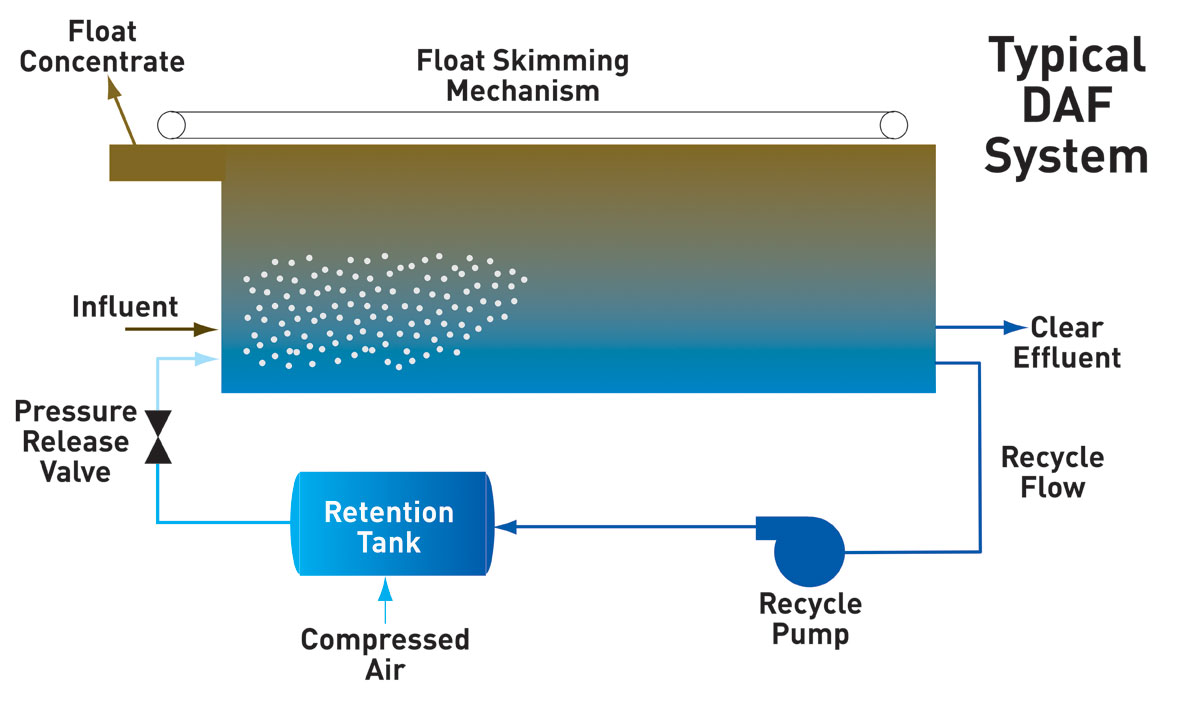
How does it work?
Dissolved Air Flotation (DAF) is a process for the removal of fine suspended material from an aqueous suspension. The term “flotation” indicates something floated on or at the surface of a liquid. The DAF provides the energy for effective flotation in the form of extremely fine air bubbles, which become attached to the suspended material to be removed. This attachment of bubbles to the particle “reduces” the density of the particle resulting in increased buoyancy, thus affecting flotation. Chemical conditioning is often used to increase the effectiveness of the dissolved air flotation process. The most reliable and positive method of producing bubbles of the proper size is to dissolve air into water under pressure and then to reduce the pressure of the solution. As the pressure is reduced, the air comes out of solution in the form of microbubbles.
- Wastewater is pretreated with chemicals.
- Treated influent is fed to DAF unit.
- Recycle is drawn off effluent line and is sent through the air dissolving system and then sent back into the DAF.
- Air is released from the recycle flow and the bubbles help to float solids in the DAF tank.
- Float is skimmed from the top of the tank.
- Clear effluent flows out of the unit.
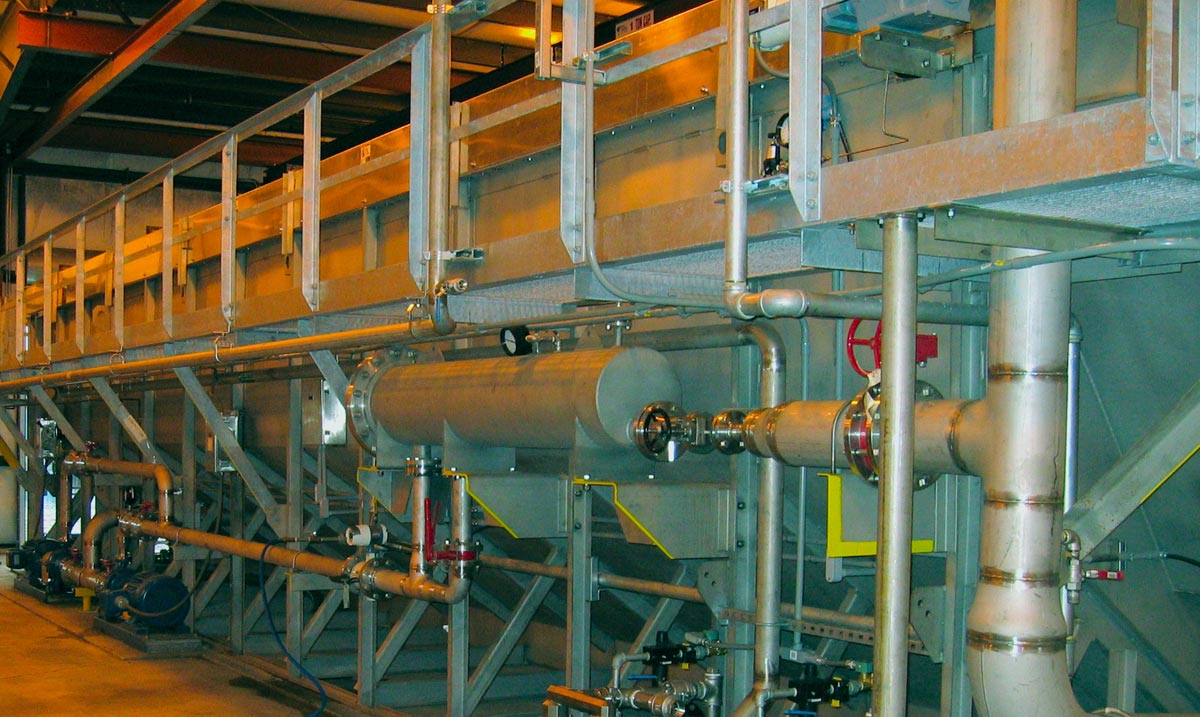
How do I know if a K-S DAF is right for my process?
Does your process involve:
- Clarification of a wastewater stream
- Reduction of TSS, COD, and BOD to meet effluent discharge limits
- Recovery of suspended material
- Reclaiming water for reuse
- Thickening of slurries and sludges
Are you interested in:
- Minimal operator attention
- Low maintenance time and expense
- A well-built machine offering long equipment life
If you can relate to these objectives, then follow these steps:
- Establish influent and required effluent conditions as accurately as possible
- Complete the K-S Applications Questionnaire
- Contact us to assist in making a preliminary selection
- Perform lab and/or pilot scale testing if necessary
- Make final selection
Other considerations:
- What is immediately upstream and downstream of the DAF?
- What is most important: floated solids concentration, effluent clarity, capital or operating cost, etc.?
- What have you tried before? Why did/didn’t it work?
- What materials of construction are acceptable? What materials are not acceptable?
- Do you need auxiliary equipment, such as chemical pretreatment, for example?
- Do you need any instrumentation or controls?
- Do you have any standard specifications?
There are many factors affecting the operation of a clarification process. Among these are chemical pretreatment; power, water, air, or other utilities; operator attention; cleaning requirements; and maintenance needs. All of these should be considered when selecting a wastewater clarification system.

How can we help you?
Komline-Sanderson has been a leader in liquid/solid separation equipment design and manufacturing for over 60 years, meeting the needs of both industrial and municipal clients. Our equipment operates worldwide in an ever-growing range of process and wastewater applications. Expert process insight, outstanding customer service and high-quality equipment make K-S a valuable partner throughout the project cycle.
Lab and pilot testing service is available to assist in equipment selection and sizing.
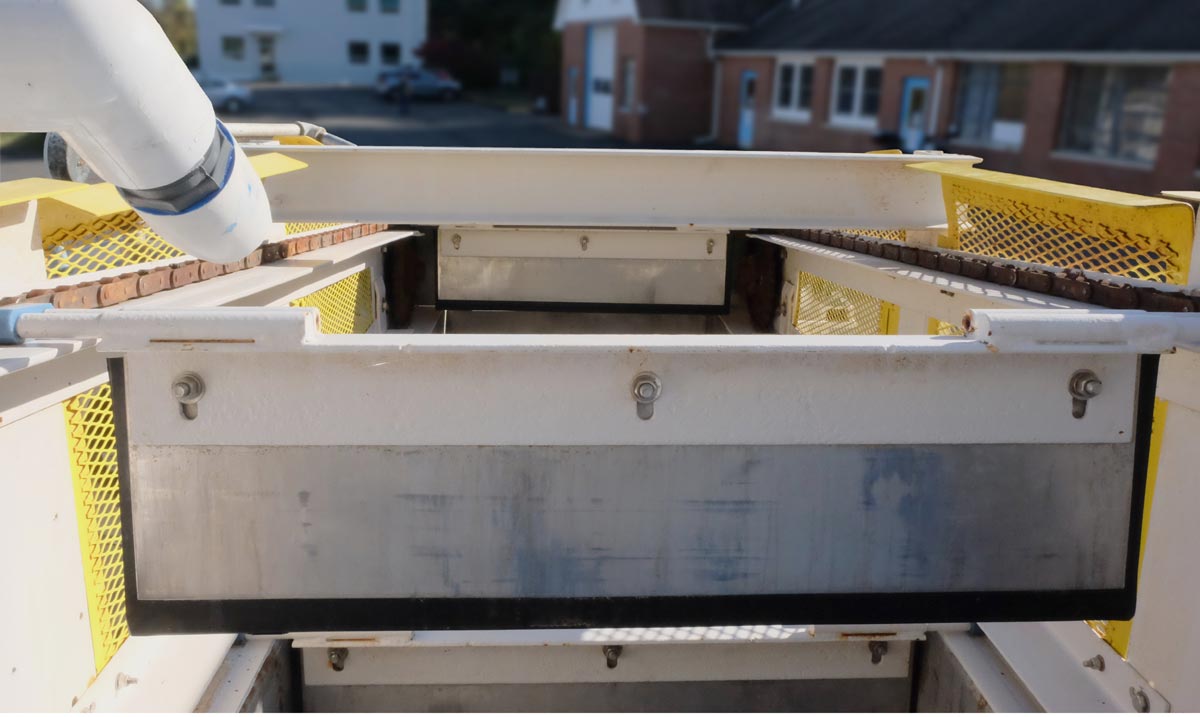
Design Features
Komline-Sanderson Dissolved Air Flotation Clarifiers are designed to meet each client’s specific process needs. The design of the flotation tank using either a flat or v-shaped bottom depends on the characteristics of the influent. Bottom collectors are sometimes used to remove solids that might settle at the bottom of the tank. The air dissolving system on the K-S DAF Clarifier ensures the efficient mixing of air into the recycle water from the flotation tank. A top collector skimmer assembly is used to remove concentrated float from the tank. The floated material is skimmed to a discharge hopper at one end of the tank.
K-S process and project engineers provide assistance at all phases of the project. Depending on your specific requirements, K-S can provide you with a DAF Clarifier only or a complete system. A successful plant depends on the integration of the key process units with properly selected ancillary equipment and the right facility design. Reliability, ease of operation, rugged construction, performance, and superior customer service are all trademarks of a K-S installation. A typical system includes the DAF unit with a recycle pump and air dissolving system as well as chemical pretreatment tanks, mixers, and pumps. Depending on customer needs, concentrated float dewatering equipment can also be provided. Controls and instrumentation are available to complete the system.
How do I know if a K-S DAF is right for my process?
Does your process involve:
- Clarification of a wastewater stream
- Reduction of TSS, COD, and BOD to meet effluent discharge limits
- Recovery of suspended material
- Reclaiming water for reuse
- Thickening of slurries and sludges
Are you interested in:
- Minimal operator attention
- Low maintenance time and expense
- A well-built machine offering long equipment life
If you can relate to these objectives, then follow these steps:
- Establish influent and required effluent conditions as accurately as possible
- Complete the K-S Applications Questionnaire
- Contact us to assist in making a preliminary selection
- Perform lab and/or pilot scale testing if necessary
- Make final selection
Other considerations:
- What is immediately upstream and downstream of the DAF?
- What is most important: floated solids concentration, effluent clarity, capital or operating cost, etc.?
- What have you tried before? Why did/didn’t it work?
- What materials of construction are acceptable? What are not?
- Do you need auxiliary equipment, such as chemical pretreatment, for example?
- Do you need any instrumentation or controls?
- Do you have any standard specifications?
There are many factors affecting the operation of a clarification process. Among these are chemical pretreatment (power, water, air), or other utilities (operator attention, cleaning requirements; and maintenance needs). All of these should be considered when selecting a wastewater clarification system.
FAQs
Q:
Why use a DAF?
A:
Dissolved Air Flotation is designed for the removal of suspended solids or water-immiscible liquids from process or wastewater to produce an effluent of high clarity and free of objectionable particles or liquid. Dissolved air flotation is best applied to remove materials that normally settle slowly, persist by remaining in suspension, or have a tendency to float.
Q:
Is there an easy test to tell if a DAF is right for an application?
A:
A simple lab test will generally determine if the use of a DAF is feasible. Further testing can be done to simulate the operation of the DAF under specific operating conditions.
Q:
Can a DAF be used in a batch process?
A:
Yes, although the DAF operates as a continuous separation device, it can be used in batch processes. In these cases, the unit would be operated intermittently as needed.
Q:
How is the correct size determined?
A:
Lab or pilot testing is often the best way to determine the correct separation characteristics of a given waste stream. In many cases, a DAF has been previously installed or tested for the same or a similar application. This provides a good starting point in selecting equipment.
Q:
What designs are available?
A:
The design of the DAF can be changed to suit specific needs for a given application. Bottom collectors are used in a DAF to remove any portion of the influent solids that settle rather than float. DAFs can be constructed from a variety of materials, including carbon steel or stainless steel.
Q:
What other auxiliary equipment is needed?
A:
Generally, chemical pretreatment tanks with mixers and chemical metering pumps are required. In some cases, feed or effluent pumps are needed as well. Depending on customer needs, dewatering equipment can also be provided. Auxiliary equipment can be provided by K-S for a complete system including controls and instrumentation.
Q:
What utilities are required?
A:
Electric power is required to run the skimmer drive as well as the recycle pump. Compressed air is required for the air-dissolving system.
Q:
How much operator attention and maintenance are required?
A:
The DAF is essentially a hands-off machine that requires little operator attention. Maintenance usually involves lubrication of drives and bearings and occasional replacement of worn items.
Q:
How much do spare parts cost?
A:
It is difficult to give a specific cost since there are many sizes and designs of DAF’s.
Q:
What technical service is available?
A:
Technical service is available for the installation and start-up of new equipment. Existing units can also benefit from a service visit to assist in optimizing performance. Contact us for a service proposal.
Q:
Are pilot units available?
A:
DAF pilot units are available for rental for testing at customer facilities.

